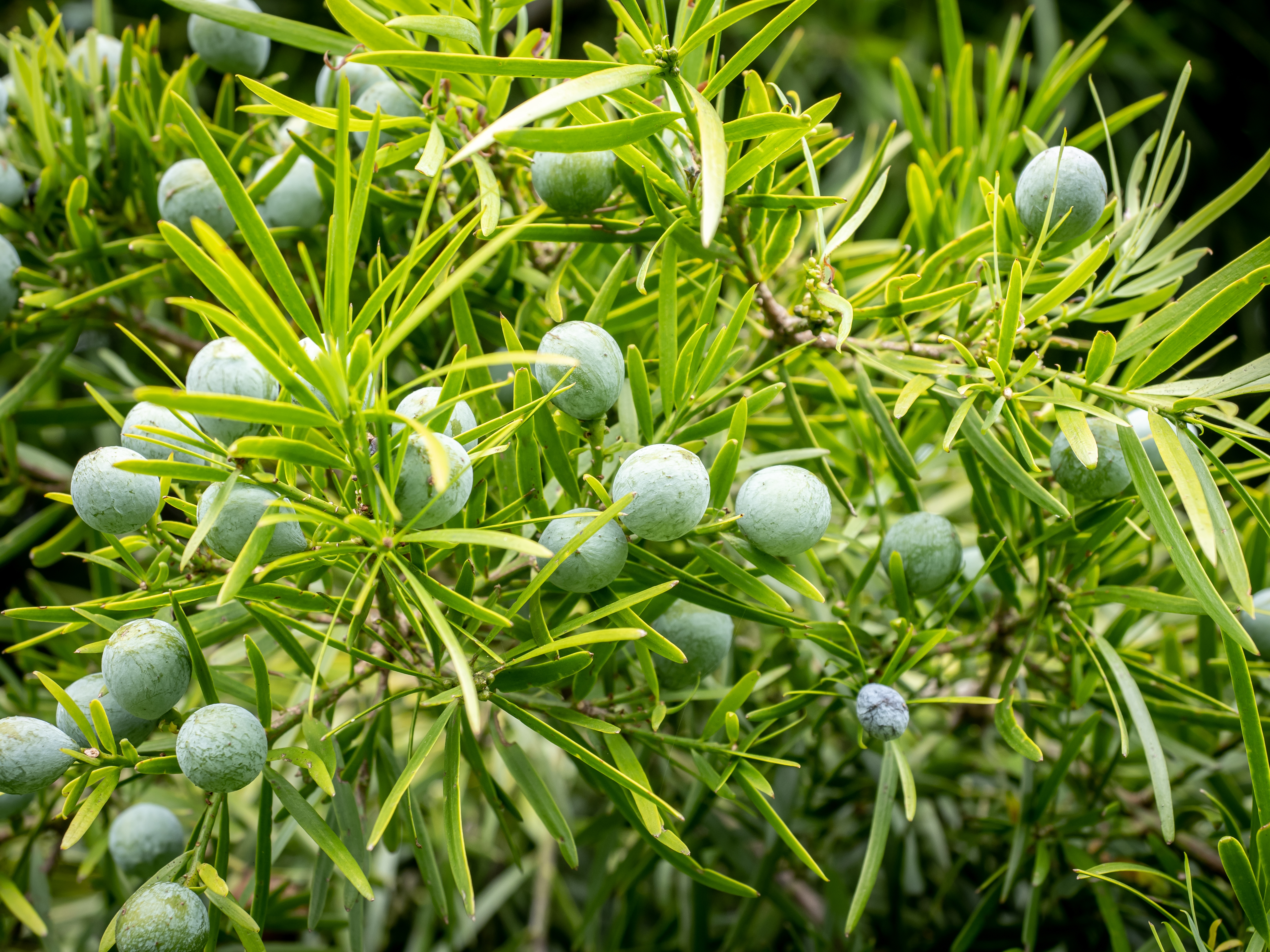Common Yellowwood
(Afrocarpus falcatus)

Description
Afrocarpus falcatus (syn. Podocarpus falcatus) is a species of tree in the family Podocarpaceae. It is native to the montane forests of southern Africa, where it is distributed in Malawi, Mozambique, South Africa, and Eswatini. Common names include common yellowwood, bastard yellowwood, outeniqua yellowwood, African pine tree, weeping yew, Afrikaans: outeniekwageelhout, kalander, Sotho: mogôbagôba, Xhosa: umkhoba and Zulu: umsonti. It is widespread, in some areas abundant, and not considered threatened, but it is a protected tree in South Africa. It is grown as an ornamental tree, especially in South Africa, and occasionally abroad. This is an evergreen conifer often growing up to about 45 meters tall, but known to reach 60 m. At higher elevations and in exposed, coastal habitat it rarely exceeds 25 m tall. The trunk can be 2 to 3 m wide, and is gray-brown to reddish. It is smooth and ridged on young stems, but increasingly flaky on older trunks. The leaves are arranged in spirals on the branches. They are small and narrow, up to 4.5 cm long by about 6 mm wide. They are green to yellowish, hairless, and leathery and somewhat waxy in texture. It is a dioecious species, with male and female structures on separate plants. The male cone is brown with spiralling scales and measures 5 to 15 mm long by 3 mm wide. It grows from the leaf axils. The female cone has one scale bearing one seed about 1 to 2 cm long. The gray-green seed is drupe-like with a woody coat covered in a fleshy, resinous skin. The wood, often called podo or yellowwood, is good for construction, particularly shipbuilding. It is also made into plywood and used to make many products, including furniture, boxes, vats, toys, farm implements, musical instruments, and railroad ties. It is used in the construction of houses. It is also used as firewood. Some examples of South African yellowwood antique woodworking were created with the wood of this tree. The wood is also used for making floor boards and parquet blocks. The bark contains 3-4% tannin and is used for tanning leather. The wood is useful, but not very durable, as it is susceptible to blue stain fungus, powderpost beetles, longhorn beetles, and termites. The seed is edible, but resinous. The bark and seeds have been used in traditional African medicine. The tree is cultivated as an ornamental and a windbreak, and to prevent erosion. It has been used as a Christmas tree.
Taxonomic tree:







